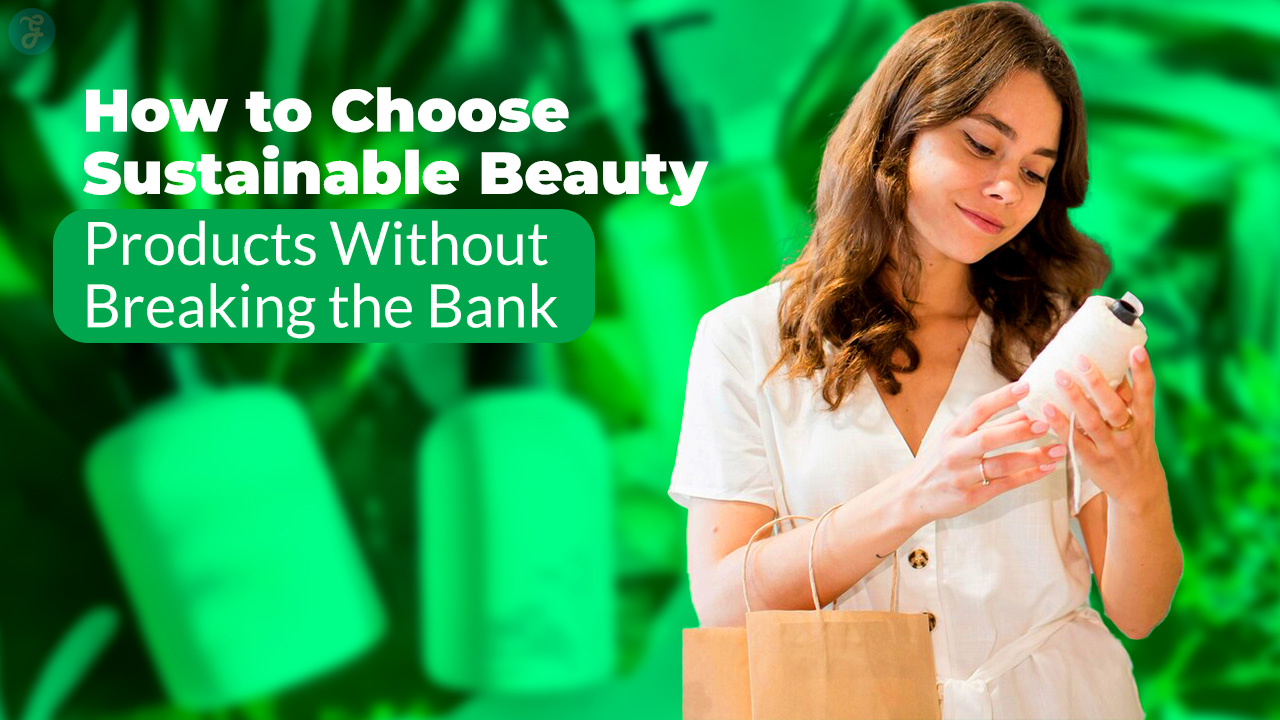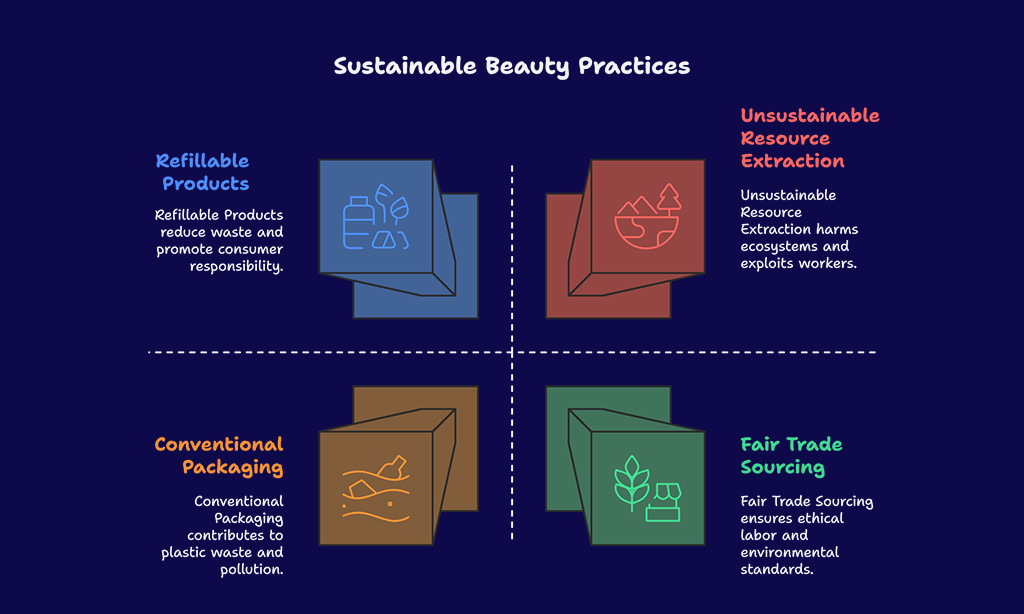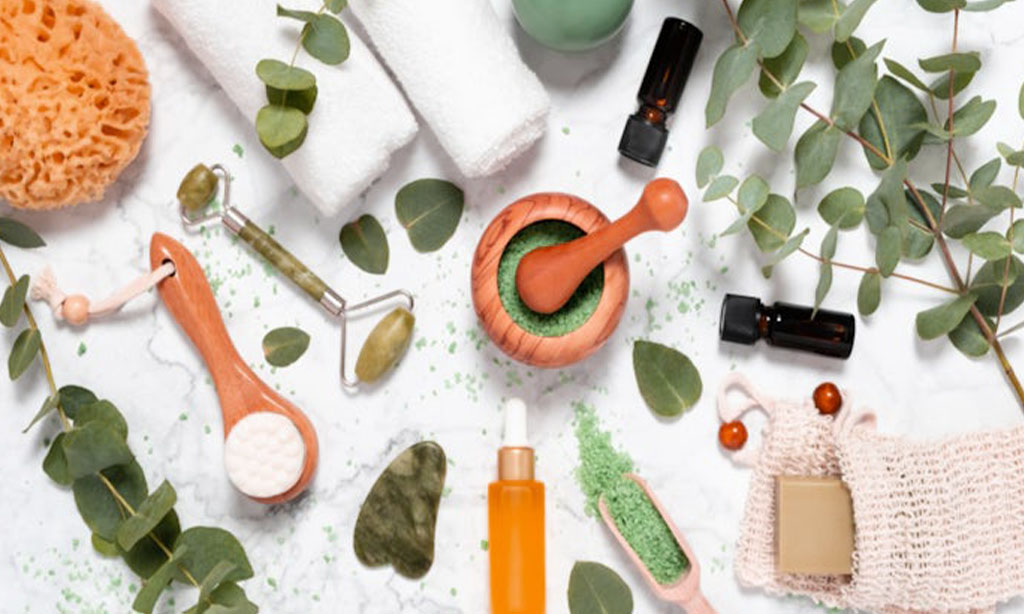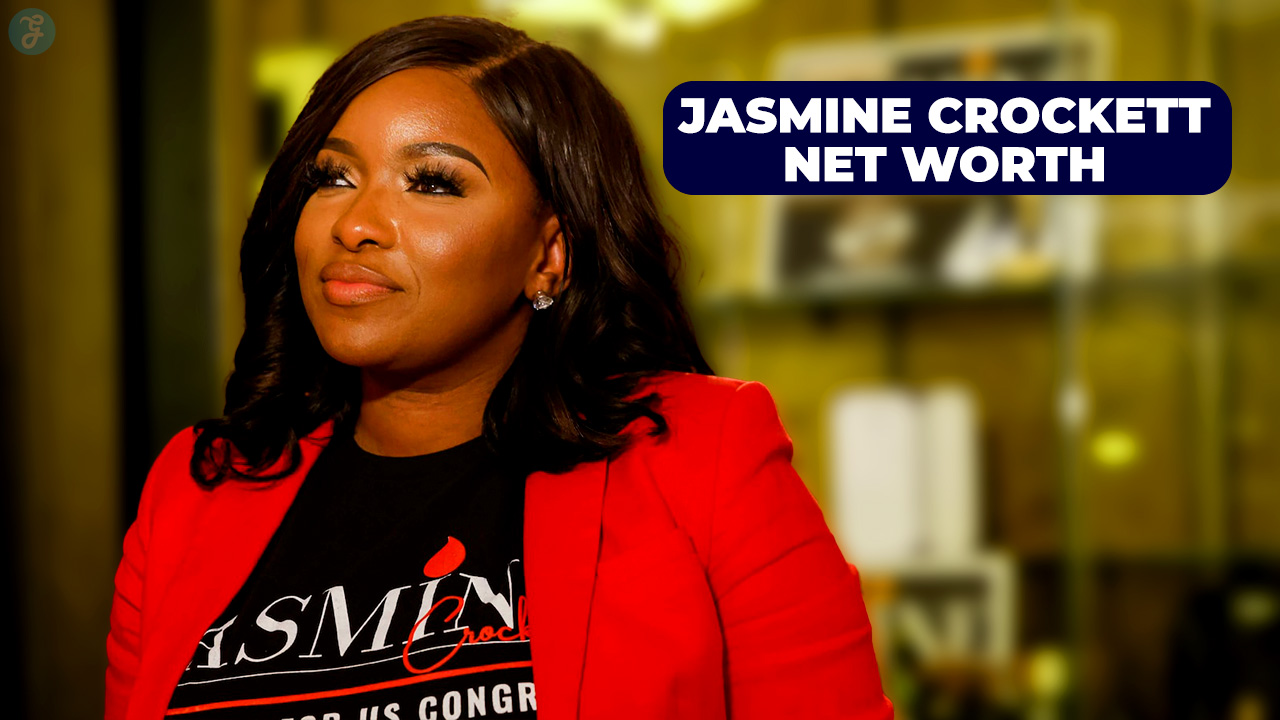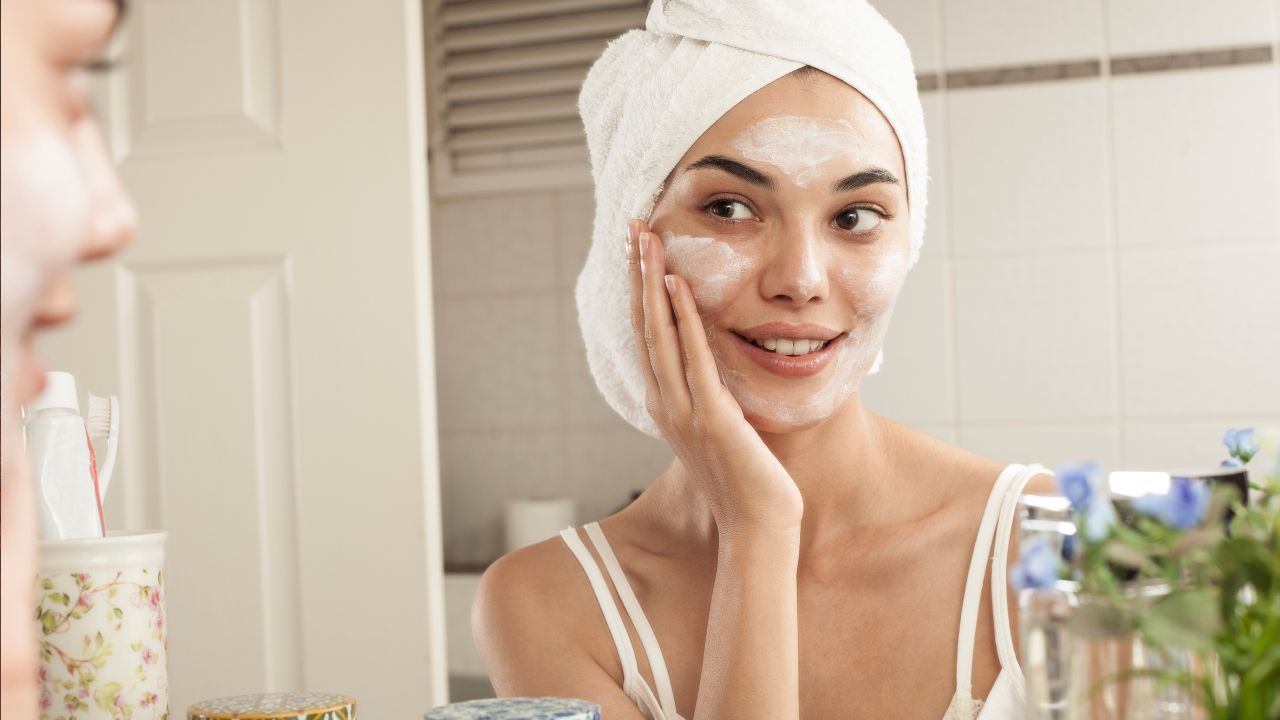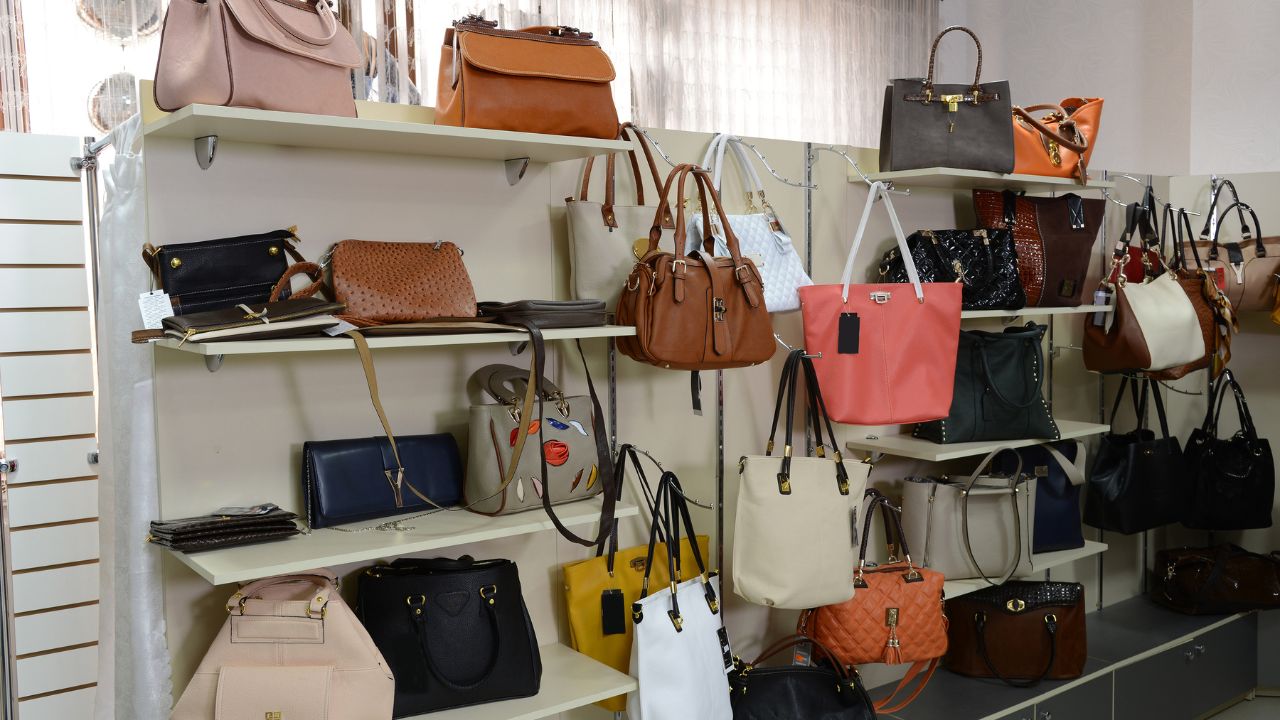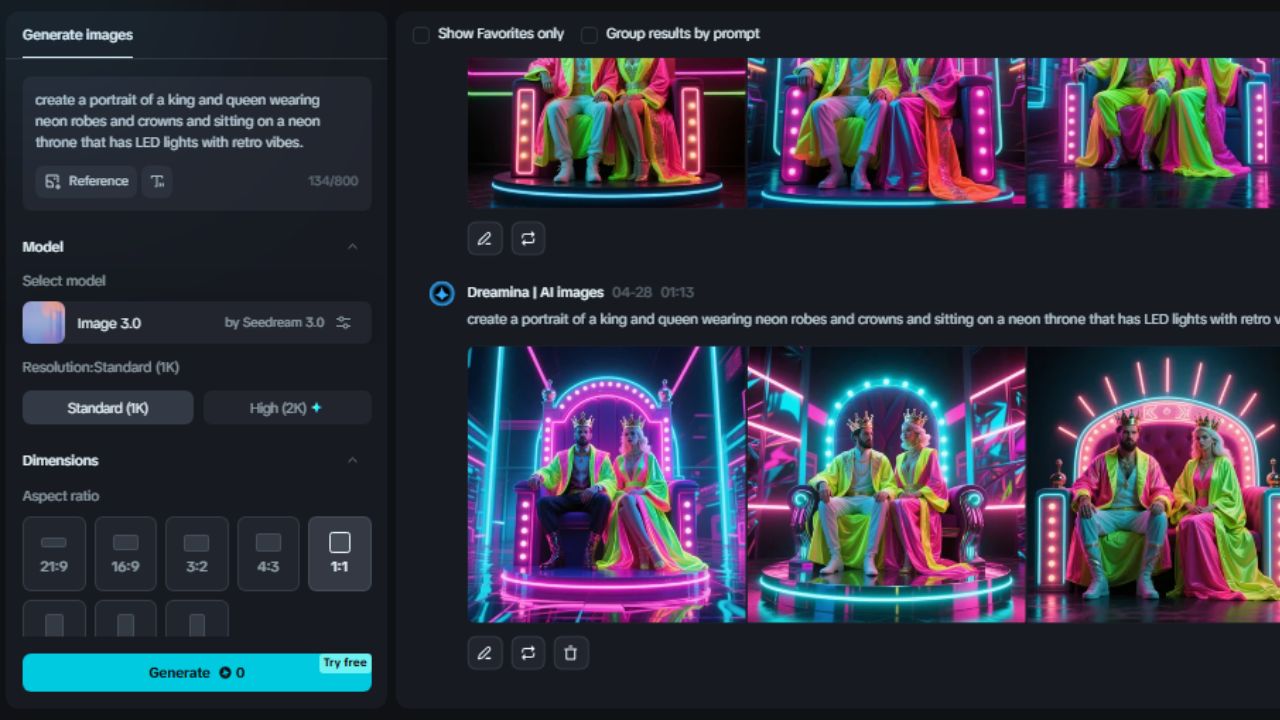Finding beauty products that are both sustainable and affordable can feel overwhelming. Many people think eco-friendly options cost too much or don’t work as well, leaving them frustrated when trying to make greener choices.
Did you know the beauty industry creates 120 billion plastic packages every year? This massive waste harms the planet and highlights why choosing sustainable products matters now more than ever.
This guide will show you how to pick ethical and budget-friendly items without sacrificing quality. You’ll learn simple tips to save money while making a positive impact on the environment.
Ready for better choices that won’t empty your wallet? Keep reading!
Key Principles of Sustainable Beauty
Sustainable beauty focuses on making choices that are better for the planet and its people. It emphasizes responsible practices in every step, from creation to disposal.
Ingredient sourcing
Brands using ethical sourcing focus on the planet and people. Certifications like USDA Organic or Fair Trade show a commitment to sustainable ingredient sourcing. These labels ensure ingredients come from responsible farming methods, fair labor practices, and ecofriendly sources.
Unsustainable resource extraction destroys nature. It leads to deforestation, harms ecosystems, and exploits workers. Ethical supply chains reduce these impacts by supporting fair trade principles and crueltyfree ingredient sourcing.
Researching brands helps spot environmentally conscious practices before buying beauty products.
Packaging sustainability
Ecofriendly packaging is shaping the sustainable beauty industry. Many brands now focus on reducing virgin plastic use. Since 2018, companies have cut virgin plastic output by 65%.
Aveda and Lush use recyclable materials to minimize waste. Refillable beauty products like those from Kjaer Weis also help consumers make greener choices.
Consumer demand drives these changes. Almost half (47%) of buyers are ready to pay more for sustainable packaging options. Green packaging solutions improve both environmental impact and brand reputation in the beauty industry.
Cruelty-free certifications
Cruelty-free certifications like Leaping Bunny and PETA’s cruelty-free logo confirm a brand does not test on animals. These labels ensure ethical beauty practices, promoting compassionate cosmetics.
Brands such as LUSH, The Body Shop, and Urban Decay highlight their commitment to nonanimal testing. Consumers now favor these humane beauty options for ethical sourcing and manufacturing.
Carbon footprint and water usage
The beauty industry plays a big role in climate change. It produces waste through packaging and uses too much water during production. Brands like Garnier and Unilever aim to cut carbon emissions and save water.
Eco-friendly cosmetics are one solution, helping reduce personal carbon footprints while promoting sustainable practices.
Plastic packaging and unsold products add to the problem. Choosing brands committed to being carbon-neutral or practicing water conservation supports green beauty efforts. Small changes can create lasting environmental impact, encouraging ethical sourcing and conscious consumerism.
Practical Tips for Budget-Friendly Sustainable Beauty
Start small, choose wisely, and focus on affordable options that align with your values—discover how to build a sustainable beauty routine without spending too much.
Start with essential products
Focus on switching to basic skincare items first. Replace everyday essentials such as cleansers, moisturizers, and sunscreen with eco-friendly beauty options. These products are crucial for healthy skin and should be your top priority in a sustainable routine.
Look for USDA Organic or B-Corp certifications to ensure the items meet sustainability standards.
Choosing essential beauty products reduces waste and saves money. Clean beauty brands often offer gentle yet effective formulations made with natural ingredients. For example, pick a cruelty-free moisturizer that suits all skin types or an eco-friendly sunscreen with broad-spectrum protection.
These small changes make a big difference in building an environmentally friendly routine without overspending.
Explore multi-use items
Multi-functional beauty products are great for saving money and lowering waste. A tinted moisturizer can replace separate foundation and sunscreen. Lip-and-cheek tints work for both areas, cutting down clutter in your routine.
Choose items like coconut oil, which works as a makeup remover, moisturizer, and hair treatment. Fewer products mean less packaging waste and fewer expenses over time—perfect for eco-friendly beauty routines.
Opt for refillable packaging options
Refillable packaging helps reduce single-use plastics in beauty products. Brands like Kjaer Weis use durable materials such as metal and glass for their refill systems, making them stylish and sustainable.
Lush even offers Naked products that skip traditional packaging entirely.
These ecofriendly beauty options save money over time. Customers can reuse containers instead of buying completely new ones with every purchase. This decreases packaging waste while providing an environmentally friendly beauty solution.
Choosing reusable containers is a simple step to support zero-waste living without compromising quality or style.
Shop affordable sustainable brands
Affordable brands like Cocokind and Mad Hippie offer ecofriendly beauty products at budget-friendly prices. Honest Beauty provides high-quality items with sustainable packaging. Lily Lolo focuses on cruelty-free practices without raising costs.
These brands prove that cost-effective clean beauty is within reach.
Buying in bulk from these sustainable brands can save money and reduce waste. Many companies, like Well People and 100% Pure, often run discounts or sales on their products. This makes it easier to enjoy sustainable beauty on a budget while minimizing beauty packaging waste.
How to Shop Smart for Sustainable Beauty
Shopping smart for sustainable beauty can save both money and the planet. Focus on deals, smaller products, or flexible return policies to make eco-friendly choices more accessible.
Look for sales and discounts
Follow brands on social media to catch special promotions and offers. Many sustainable beauty companies share updates on discounts or limited-time deals through these platforms. Sign up for email newsletters too, as they often include exclusive promo codes.
Buy in bulk to save money and reduce packaging waste. Big purchases last longer and cut down shipping costs too. Use coupon websites or apps to find extra bargains. Supporting local businesses may also offer affordable, eco-friendly options without long shipping times!
Buy travel-size or sample products
Miniature beauty products from brands like Crunchi, Osea, and Ilia let you try items before committing to full sizes. They reduce financial risk while providing a cost-effective way to explore new skincare or cosmetics.
Trial-size beauty items are perfect for travel due to their compact size and lightweight nature. Many brands offer these petite skincare items, making them easy to find and convenient for frequent travelers.
Set a clear budget
Decide on how much you can spend before buying ecofriendly beauty products. A clear budget keeps your spending in check and prevents overspending. For example, affordable sustainable skincare items often cost around $120, close to mass-produced products priced at $112.
Sticking to a set number ensures financial control while staying environmentally conscious.
Pick essential items first when setting your limits. Focus on what you need the most—like multi-use or refillable options—to reduce costs further. This way, you’ll stick with walletfriendly sustainable beauty choices without stressing your finances.
Check for transparent return policies
Transparent return policies make shopping safer and easier. Many responsible and eco-conscious brands offer flexible returns to build trust with customers. If a product doesn’t suit your skin or preferences, you can send it back without hassle.
Clear policies help reduce waste since returned items may get repurposed or recycled by the brand.
Look for brands that clearly list their return terms on their website. Some companies even provide free return shipping, making the process smoother. Supporting such brands ensures ethical consumerism in beauty while protecting your wallet from risky purchases.
Myths About Sustainable Beauty on a Budget
Many think sustainable beauty always costs a lot, but this isn’t true. Others assume eco-friendly products can’t work well, which is also a misconception.
It’s always expensive
Sustainable beauty doesn’t have to cost a fortune. Affordable options like aloe vera and jojoba oil prove that ecofriendly beauty products can fit any budget. Brands such as Honest Beauty, Cocokind, and Mad Hippie offer clean and sustainable beauty choices without breaking the bank.
A Nielsen report found 66% of global consumers are ready to pay more for sustainable goods, but affordable alternatives exist. The growing market for natural skincare—expected to hit $1 billion by 2025—shows companies now provide budgetfriendly sustainable beauty options at realistic prices.
Natural products lack effectiveness
Some think natural beauty products fail to work well. This is not true. Organic cosmetics contain plant extracts and antioxidants that help skin stay healthy. For example, aloe vera soothes burns, while tea tree oil fights acne effectively.
Natural does not mean weak or ineffective. Many clean beauty options prove strong enough for skincare needs. Both natural and synthetic ingredients can cause reactions, but organic items often avoid harsh chemicals like parabens or sulfates, making them safer choices for many people.
Transitioning to a Sustainable Beauty Routine
Switching to eco-friendly beauty can feel overwhelming, but taking small steps makes it manageable. Replace products one at a time and focus on thoughtful choices that last longer.
Replace products gradually
Start with daily essentials like cleansers and moisturizers. Replace them as they run out. This avoids waste while incorporating ecofriendly beauty products. Gradually switch to refillable items for a more sustainable skincare routine.
Focus on healthy skincare alternatives that suit your needs. Prioritize clean beauty products that are nontoxic and ethical. Small steps can create an environmentallyfriendly beauty routine without overwhelming your budget or lifestyle.
Focus on long-term savings
Switching to ecofriendly beauty products can save money over time. Bulk sustainable purchases help reduce costs and minimize packaging waste. Simplified beauty routines also lower spending by reducing unnecessary product usage.
Affordable green beauty options, like organic products, provide lasting benefits that make the initial costs worthwhile. Choosing refillable or reusable sustainable packaging saves more in the long term while staying environmentally conscious.
Takeaways
Choosing sustainable beauty products doesn’t have to drain your wallet. It’s about making smart, conscious choices that benefit both you and the planet. Dr. Emily Carter, an environmental scientist with over 15 years of research in eco-friendly consumer products, shares her insights here.
She holds a PhD in Environmental Science from Stanford University and has authored multiple studies on green living habits.
Dr. Carter explains that focusing on core factors—like ingredient transparency, ethical sourcing, recyclable packaging, and cruelty-free certification—is key to sustainability.
These elements ensure safe use while protecting the environment through reduced waste and emissions.
She emphasizes the importance of certifications like USDA Organic or Fair Trade when selecting products. They build trust by confirming compliance with strict safety and sustainability standards.
To integrate these changes seamlessly into daily life, start small by replacing basics first. Multi-use items minimize waste and cost while helping achieve clean beauty goals faster.
Dr. Carter acknowledges certain challenges in shifting routines but points out clear benefits such as long-term savings and healthier personal care choices compared to less eco-conscious alternatives.
Her final advice? Take it step-by-step for a more affordable transition without sacrificing quality or values! Sustainable beauty aligns well with responsible living—and yes—it can be budget-friendly too!


